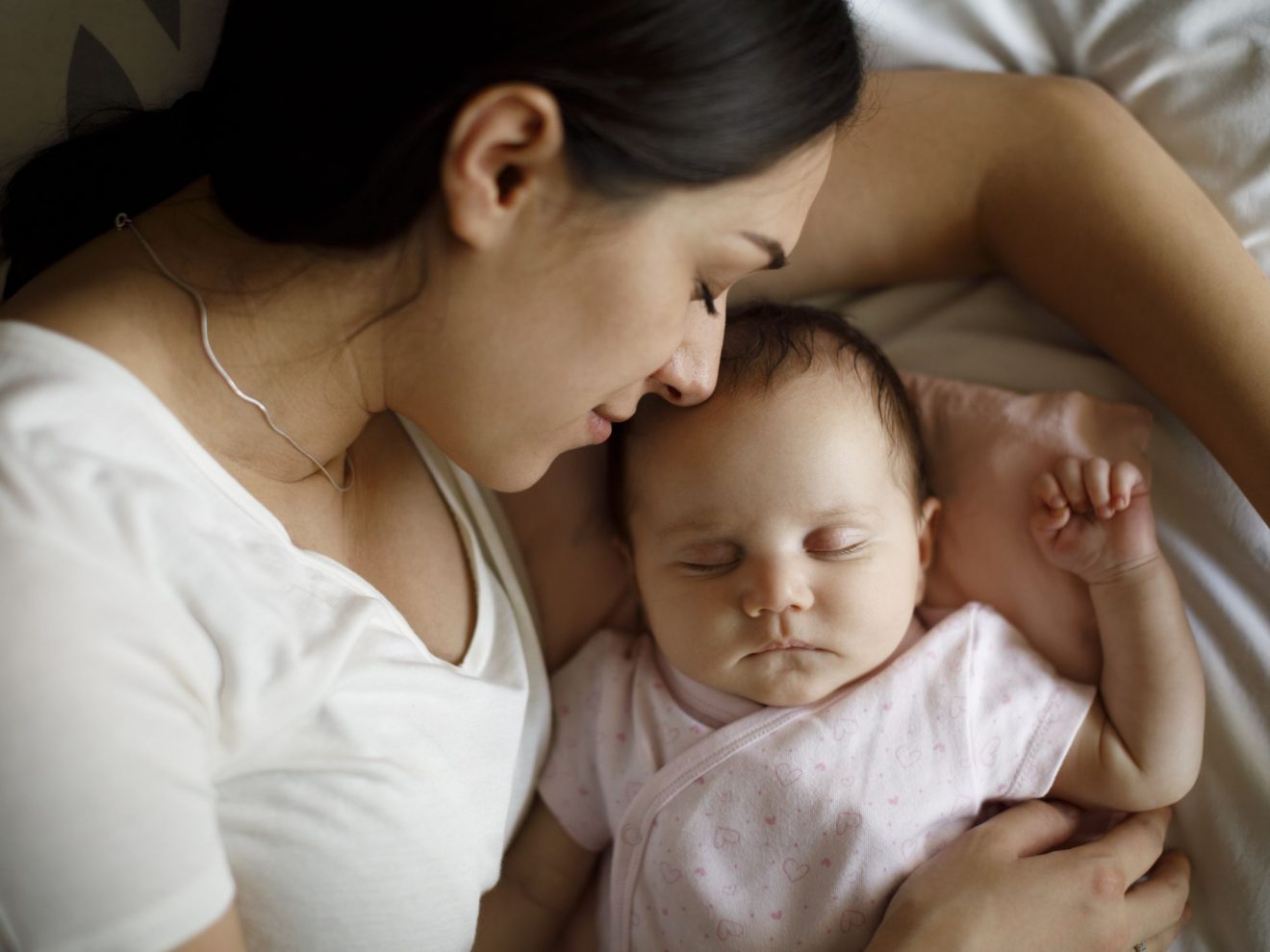The book “Sleeping Like a Baby” is authored by Himani Dalmia and Neha Bhatt, who are the co-founders running the pioneering Facebook group Gentle Baby Sleep India.
The book serves as the ultimate bedside companion for parents, and by blending traditional wisdom and the latest research, it gives us a revolutionary approach to achieve longer naps, better night sleep with fewer wakings, a happier baby and more joy and rest as a family, without resorting to fraught practices like ‘sleep training’.
With anecdotal insights, deep research and practical tips in an Indian context, this book empowers parents to tune into their instincts and understand a child’s cues so that bedtime battles, cranky days and sleepless nights are a thing of the past.
Read an excerpt from the book below.
Different Cultural Norms across the World
While mainstream Western ideals of how infants should sleep do influence other parts around the world due to greater globalization, the explosion of multimedia platforms and shared parenting literature, they are not the norm in many cultures.
Evolutionary science tells us the human baby, at birth, is the most neurologically immature of primates, with a relatively short gestation period of nine months. The early months after birth are, therefore, called the ‘fourth trimester’—when babies benefit from a womb-like atmosphere: close mother–infant contact, skin-to-skin with parents and frequent nursing. This is linked to healthy cardiorespiratory progression and oxygenation, less crying, and better thermoregulation, not to mention the opportunity to establish a healthy breastfeeding relationship.
An interesting paper, ‘Exploring Mother-Infant Bedsharing through a Cross-Cultural Lens’, in the Journal of the Motherhood Initiative, notes:
Mother–infant sleep arrangements significantly differ in Western and non-Western cultures. In the Western world, mother-infant bed-sharing is often associated with physical health and safety concerns as well as long-term social/ emotional codependency (Canadian Pediatric Society). In contrast, mother-infant bed-sharing is often a taken-for-granted part of the social order in non-Western countries (Okami, Weisner and Olmstead 244).
Indeed, the cultural practices and social setting of the place the child is born in or belongs to and the psychology of the caregivers greatly influence how the child sleeps. In Asian cultures, it is common for children to sleep with their parents— unlike in Western countries where separation of the baby from parents is institutionalized by the medical community. It’s worth considering, as data shows, that higher education levels, urbanization, economic progress and mothers joining the workforce have led to a drop in co-sleeping.
A study researching cross-cultural differences in infant and toddler sleep found that children predominantly from Asian countries had significantly later bedtimes, shorter duration of sleep in a 24-hour cycle, and were more likely to room-share than children from Caucasian regions. These studies also indicate a difference in certain cultural perceptions such as forms of protection, the importance of bodily contact between caregivers and children and family ties.
In Japan, for example, co-sleeping continues to be the preferred practice, and about 80 per cent of mothers sleep within an arm’s reach of their children. Here, rates of SIDS are the lowest in the world. In India too, parents tend to sleep in the same room as their children, where babywearing, breast-sleeping (as coined by James McKenna, where mothers and infants share a bed while feeding on demand through the night) and bed-sharing is widespread.
In most countries of Europe and large parts of America, by contrast, training babies to sleep in separate rooms is the norm. Of course, even within these regions, there are variations: an interesting study found that Indian-Americans most commonly slept with their babies among ethnic groups in New Jersey and had the lowest rate of sudden unexpected infant death (SUID). ‘Conditions that substantially increase the risk of SUID while bed-sharing include smoking, alcohol use, and maternal fatigue,’ lead author Barbara Ostfeld, PhD, a professor of Pediatrics at Rutgers Robert Wood Johnson Medical School, was quoted as saying. ‘Indian-Americans smoke and use alcohol less than other populations. In addition, grandparents tend to be very active in childcare, which reduces maternal fatigue.’
The practice of bedsharing is as old as our species itself, adds an NPR report, ‘Is Sleeping with Your Baby as Dangerous as Doctors Say?’ on increasing instances of bedsharing in the US. Homo sapien mothers and their newborns have been sleeping together for more than 200,000 years, the report quotes anthropologist Mel Konner at Emory University as saying. ‘Bed-sharing is a tradition in at least 40 per cent of all documented cultures,’ Konner says, citing evidence from Yale University’s Human Relations area files. Some cultures find it cruel, the report says, to separate a mother and baby at night. ‘In one study, Mayan mothers in Guatemala responded with shock—and pity—when they heard that some American babies sleep away from their mothers. “But there’s someone else with them there, isn’t there?” one mom asked,’ says the report in NPR.
The Indian Context
In India, in an average home, shared family spaces that promote kinship and familial bonds trump everything else, and a big family bed that can hold three members, if not four, is at the head of this close relationship. Typically, parents and children room together, the baby nestled in between parents, till she is old enough to move to a mattress on the floor, or demand a separate room. The cot, or a crib, and a nursery (a separate room for the baby) is only a recent entry, as yet a preserve of the Indian elite, a small percentage of Indians who can afford it. On the other hand, it is quite common in Indian homes to put an infant to bed in a traditional sari-cradle, particularly in rural homes. But new evidence warns against this practice to reduce the risk of suffocation as babies are safest when they sleep on flat surfaces.
On the Gentle Baby Sleep India (GBSI) forum, we are often flooded with queries from new mothers about how babies should sleep—which points to a wide gap between modern expectations from baby sleep and biologically appropriate sleep behaviour. We are often asked:
• Is it safer for babies to sleep in a crib?
• My baby doesn’t like to sleep in a crib; what should I do?
• Do I really need to separate the baby from me and have him sleep in a different room?
• Should I sleep-train my baby?
The fears of a modern Indian parent are growing every day, under peer pressure to conform to unreasonable expectations that are not in line with the biological imperatives of children. On the other hand, a lackadaisical approach to routines and letting children stay awake beyond exhaustion also leads to increased stress for the whole family. The answer lies somewhere in between, in finding the right balance, which we will get to in the next chapter.
Not all traditional wisdom in India is misinformed, of course. A lot of it is tied to the real needs of children, which many grandparents tend to understand. Elders in India will tell you it’s tradition for Indians to hold babies close day and night. This is both a function of economy and attitude: most homes are not large enough to allow for a different room entirely for the baby and do not have the means to have paid childcare. Parents here, as opposed to those in Western cultures, feel a greater sense of safety and control when they have their children within their sight. This does, as we increasingly realize from new evidence and research being conducted across the world, have a deep historical and anthropological basis, something to keep in mind before we fall for claims made by the multimillion-dollar sleep-training industry that feeds on fears and anxieties of new parents and is inching its way to India.

Excerpted with permission from Sleeping Like a Baby, Himani Dalmia and Neha Bhatt, Penguin Books. Read more about the book here and buy it here.


















